Frequently Asked Questions
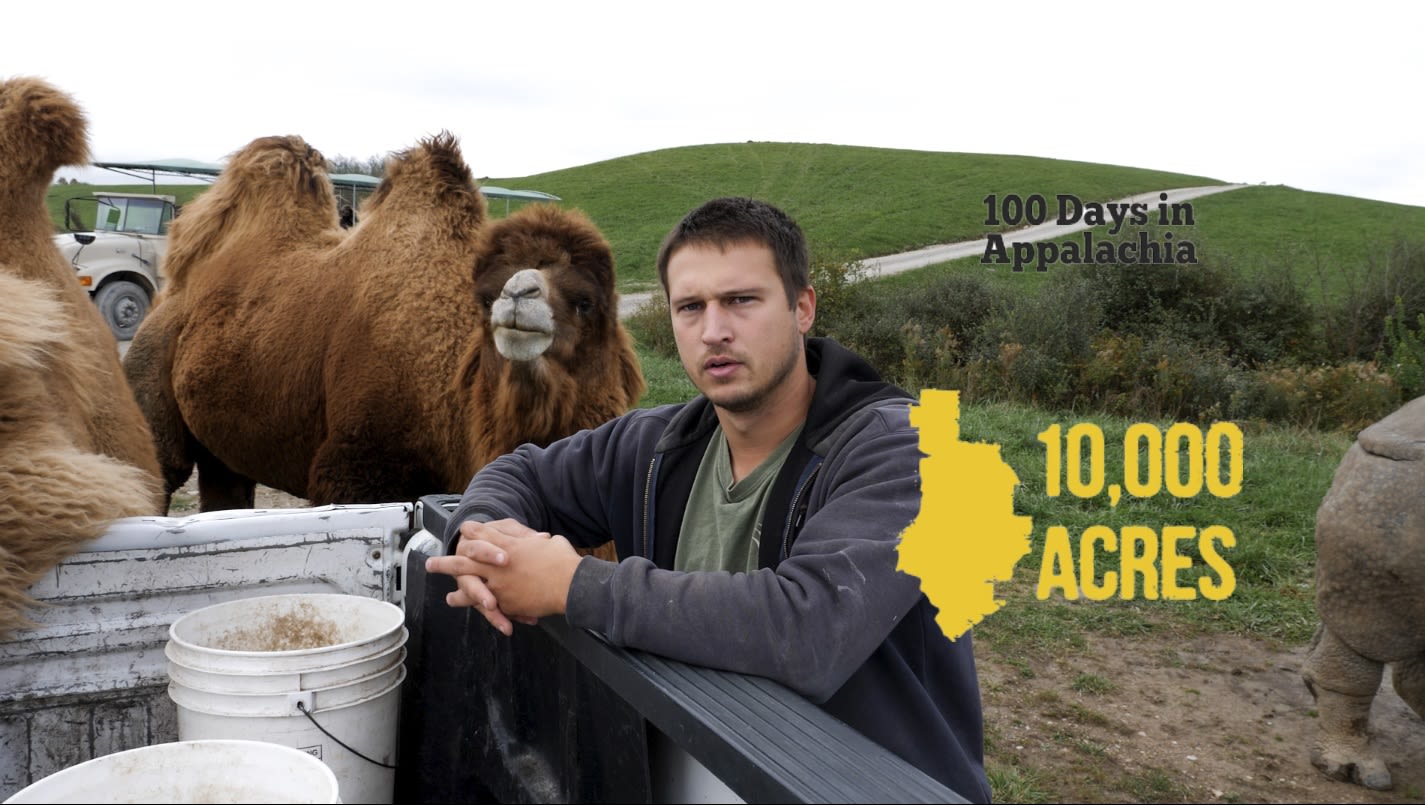
WHAT IS THE WILDS?
Initially called The International Center for the Preservation of Wild Animals, The Wilds is the largest endangered species preserve in North America. It is affiliated with the Columbus Zoo, features herd-based animal populations, safari-like visitor experiences, and nationally and internationally recognized research on the preservation of endangered species. The Wilds website is located here.

Tuffy is a resident giraffe at The Wilds. He's famous for his willingness to eat romaine lettuce from humans.
Tuffy is a resident giraffe at The Wilds. He's famous for his willingness to eat romaine lettuce from humans.
WHAT IS A MULTIMEDIA DOCUMENTARY?
This is a web-based, interactive documentary. Parts of the story are in written narrative, other parts in short, immersive documentaries. These are supported with photographs, informational graphics, video clips, and audio clips. Viewers may choose which part of the story they wish to experience at any time.
WHAT IS 100 DAYS IN APPALACHIA, AND HOW CAN I ACCESS THE STORY?
100 Days in Appalachia is a non-profit, regional news source. It offers stories about Appalachian communities, by journalists from Appalachian comunities. It favors depth and character development in its reporting, instead of stereotypes and divisiveness. 100 Days in Appalachia will publish 10,000 ACRES BEFORE THANKSGIVING. You can find it here.
WHAT WILL HAPPEN AT THE PREMIERE EVENTS?
Members of the community who have contributed to, or supported, the creation of these stories will come together and celebrate this launch event. Also, anyone from the general public who is interested in this fascinating story is invited to attend, and to meet those who lived the history of this land.
The director of the project will introduce how to navigate the web site, and we will watch some of the documentaries together. Afterwards, there will be a reception to further community.
WHAT ARE THE STORIES THAT MAKE 10,000 ACRES AN IMPORTANT PROJECT?
We start hundreds of millions of years ago, with the formation of coal itself. This story is illustrated by the artwork of Mary Ann Bucci. We tell the story of an Adena burial mound that still exists on property, saved from strip mining by a gas line. Next comes the story of the pioneer era. Shortly after this period, we focus on the Lett Settlement, a community of mixed-race farmers and trades people. Members of this community had to sue for the right to educate their children, and to vote, setting important civil rights precedents. Post-civil war, a tight farming community took root, and continued until they were pushed aside for coal mining. Some of these farmers went on to work in the mine. The Big Muskie, the largest dragline ever built, worked its way through most of these 10,000 ACRES, becoming a symbol of this important way of life. Reclamation followed closely behind the mining, as workers set to restore a deeply disturbed ecosystem. When American Electric Power (AEP) donated the almost 10,000 acres to what would become The Wilds, they ensured that this ecological healing process would continue, and be assisted by a team of professionals. In addition, herds of exotic, endangered species were brought to this obscure corner of Appalachia, creating what is now a well-established stream of tourism.
Each of these stories has its own chapter. Much material will be new to the general public, such as photos and films from personal collections, and reporting of events from those who grew up on the farms, worked in the mine, and are currently involved in the work of The Wilds.
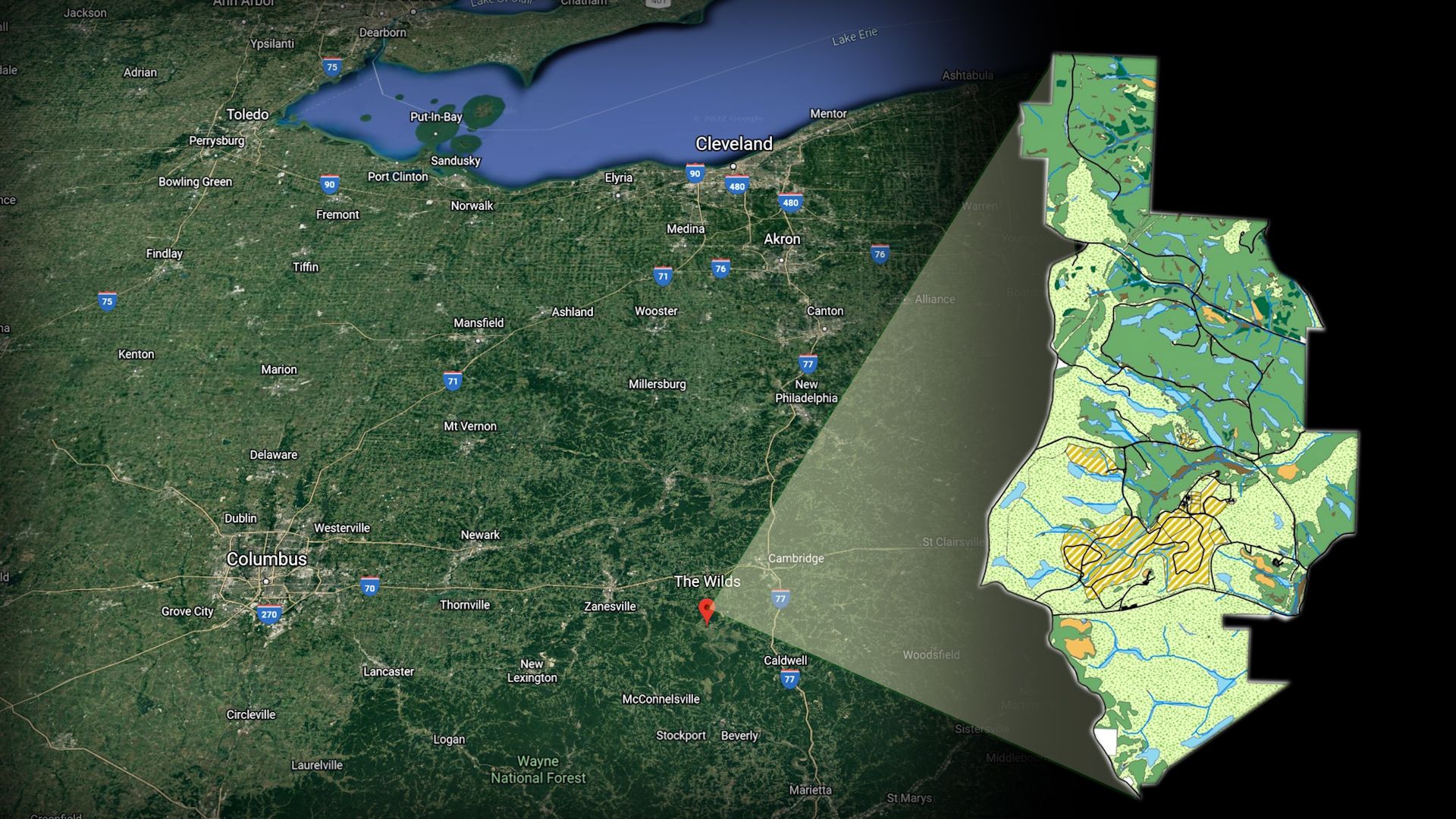
The Wilds is located in Southeastern Ohio, in the foothills of the Appalachian mountains.
The Wilds is located in Southeastern Ohio, in the foothills of the Appalachian mountains.
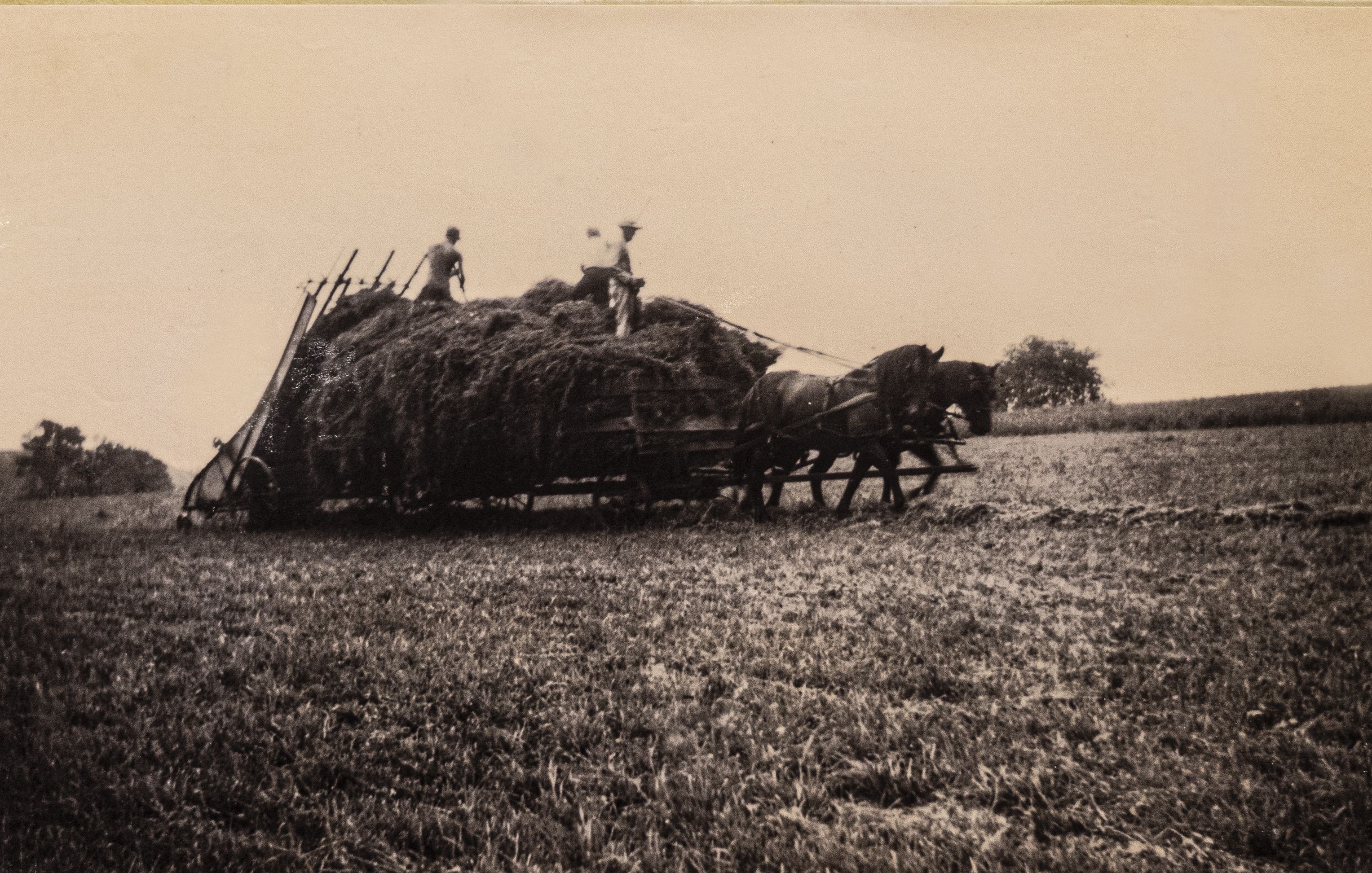
Hauling alfalfa hay on the Spillman farm.
Hauling alfalfa hay on the Spillman farm.
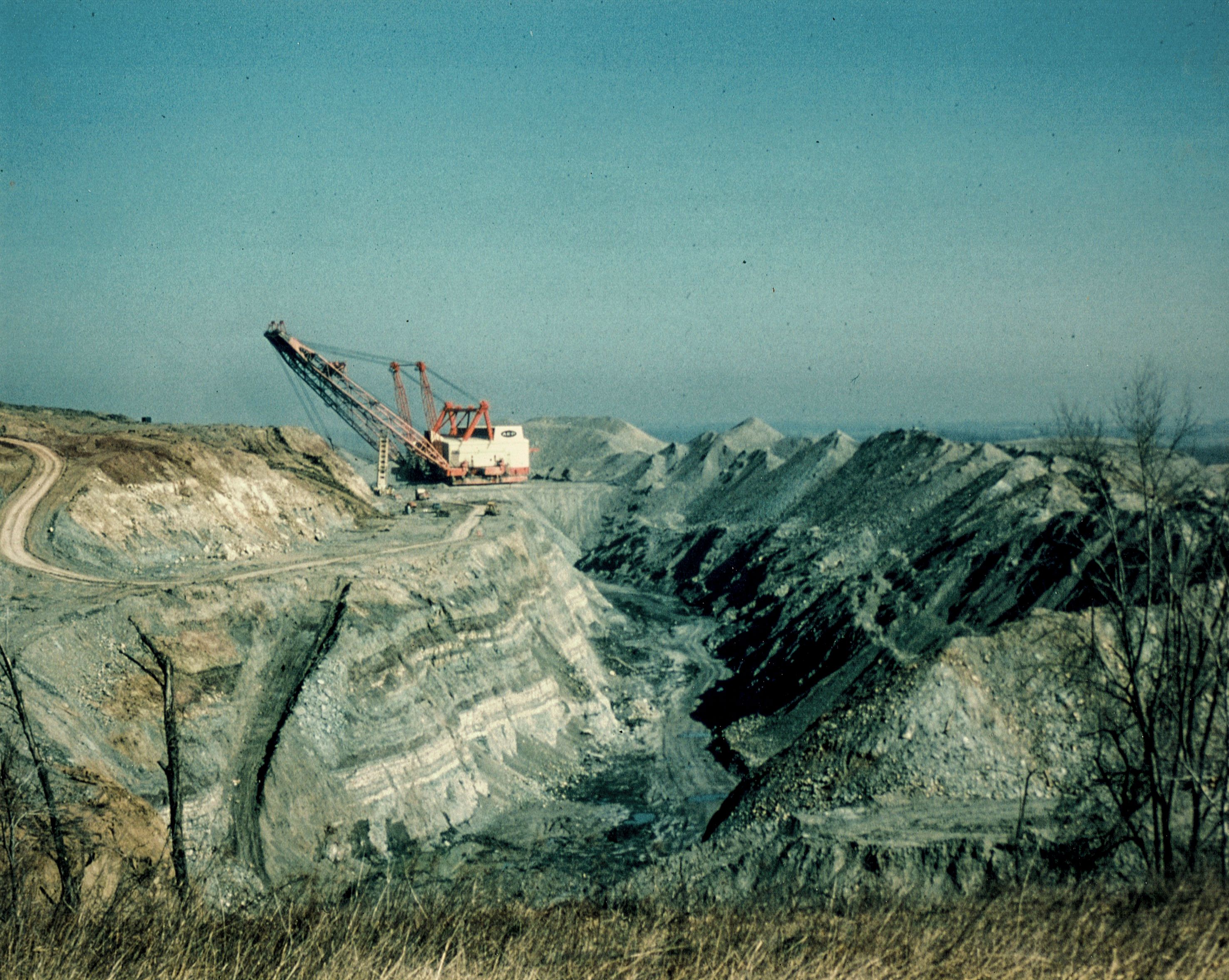
Big Muskie, the largest drag line ever built.
Big Muskie, the largest drag line ever built.
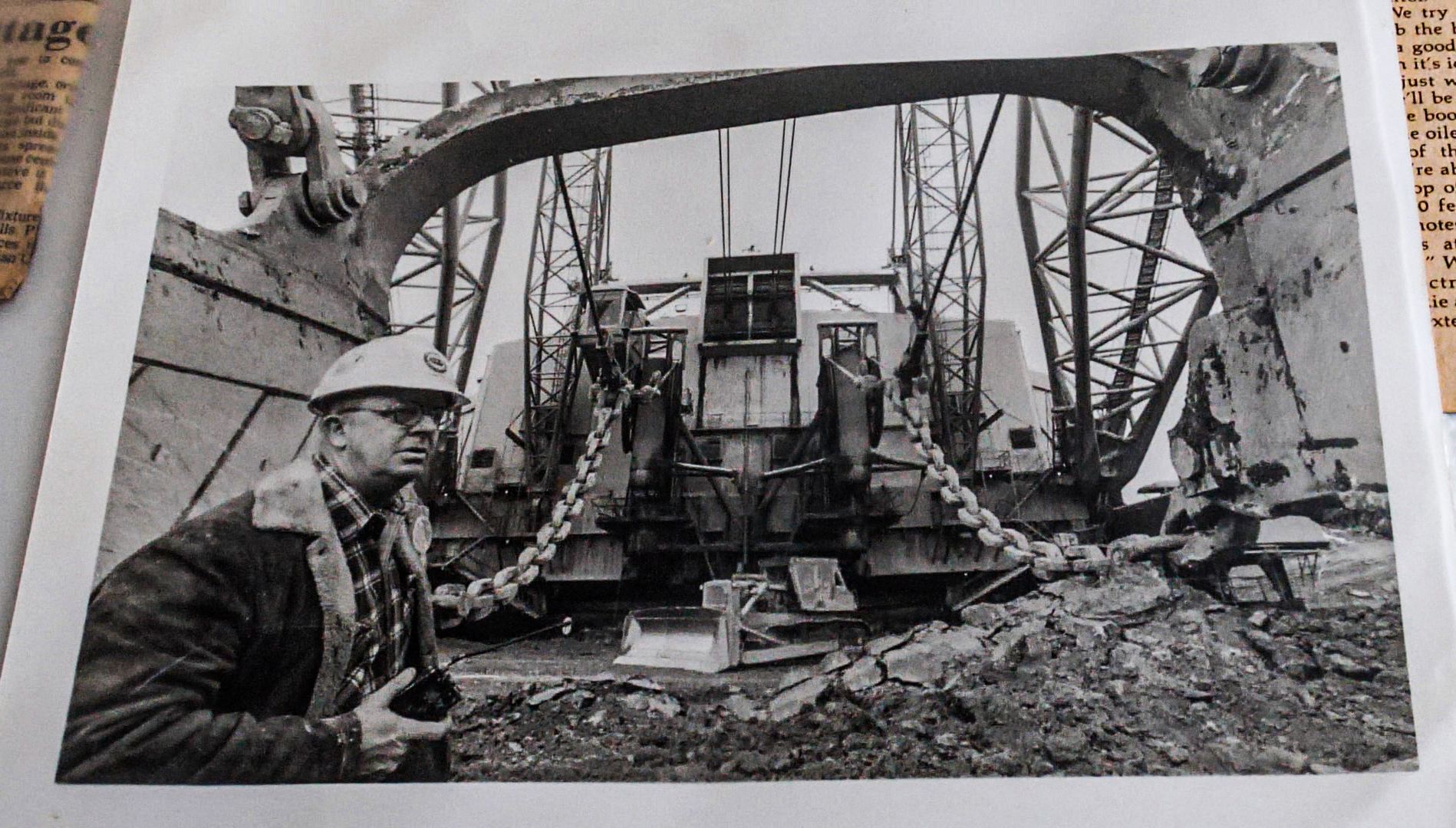
Eddie Lindimore was a supervisor of the Big Muskie. He said that once they stopped using Big Muskie in production, he could never go back to see it.
Eddie Lindimore was a supervisor of the Big Muskie. He said that once they stopped using Big Muskie in production, he could never go back to see it.
Big Muskie mining around Nomad Ridge, circa 1975.
Nomad Ridge, August 2022, site of The Wilds visitor center.
WHO IS DOUG SWIFT, AND WHY DID HE WANT TO TELL THIS STORY?
Doug Swift is a documentary filmmaker, and Visiting Assistant Professor in the Journalism program and English Department at Denison University. He has lived in the area ever since The Wilds opened in the early 1990's, when he was teaching creative writing and journalism at Muskingum College. He has long wanted to cover this story in some way.
Such extraordinary events occurring on a relatively small patch of out-of-the-way land is certainly interesting in its own right. The relationship of people to the land, and the ways in which this relationship shifted so dramatically during different eras of American history, make this an extraordinary story. The common thread, what makes this a universal story, is the human relationship with nature, and how we manage it.
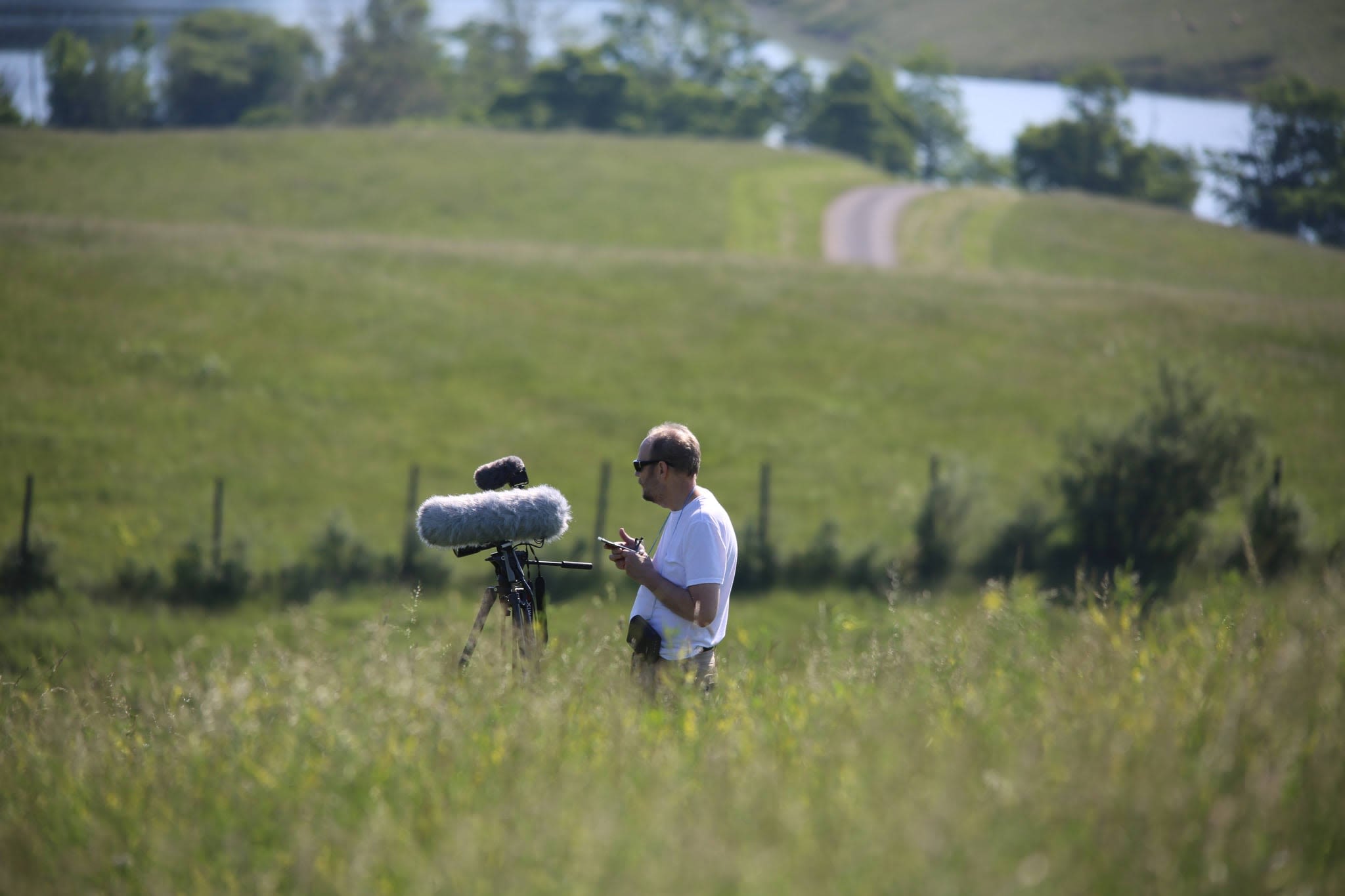
Doug Swift, filming and recording grassland birds, who find in these reclaimed fields a preserve.
Doug Swift, filming and recording grassland birds, who find in these reclaimed fields a preserve.
WHO ELSE CONTRIBUTED TO THIS PROJECT?
Mary Ann Bucci helped depict historical scenes with her paintings. The composer Matt Jackfert has created a varied and powerful score that gives all the documentaries a common voice. Students at Denison University and West Virginia University have contributed research and production. In particular, Sarah Hume has written a deeply moving account of coal miner and welder Jerry Few who, despite suffering the effects of black lung, would do it all again, such is his appreciation for the community he was part of in the mine. Denison Summer Scholars Anna Jones and Pol Le made a beautiful, meditative documentary about a group of 11 year olds attending the summer WildeCamp. This story is the final chapter of the 10,000 ACRES project, focusing on the youth, the next generation.
Many others have contributed to this project in large and small ways.

WHO ARE THE SPONSORS OF THIS PROJECT?
10,000 ACRES received a major media grant from the Ohio Humanites Council. We received an Arts Resiliency Initiative Grant from the Ohio Arts Council. We received support from Denison University in the form of a research fellowship and professional development support for the director, support for a class based on this topic, and funding for Summer Scholars to make the WildeCamp doc. Support was also provided by the Journalism program at Denison, and The Reporting Project. 100 Days in Appalachia provided support through a Mellon Foundation grant. Also providing support when we needed it most: the Muskingum County Community Foundation, and the Straker Foundation.
FOR MORE INFORMATION
For more information about the Premiere Event at Muskingum University, contact Jim Dooley, jdooley@muskingum.edu.
For more information about the Premiere Event at Denison University, contact Beth Lossing, lossingb@denison.edu.
For more information about the 10,000 ACRES project, contact Doug Swift, swiftd@denison.edu.
